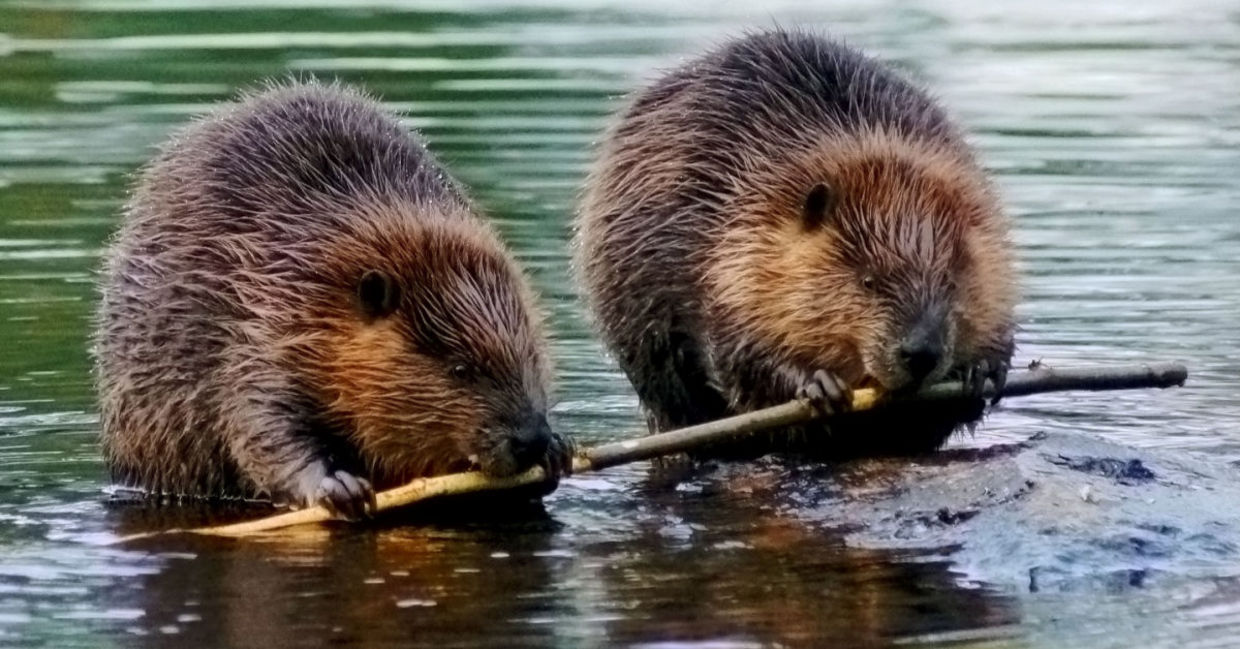
(P Harstela / Shutterstock.com)
Beaver dams are truly one of nature’s most amazing constructions. They protect beavers from wolves, coyotes, bears, and other predators, as well as serve as a place to store their food in the winter. But beaver dams are not only helpful to beavers. The dams also shape the entire ecosystem.
A recent study published in Nature was conducted by researchers from Stanford University in California to explore the effect of beaver dams and climate change. According to Stanford News, the researchers were surprised by what their studies showed.
More beavers mean better rivers
The Stanford project originally set out to study the changes to a tributary of the Colorado River during wet and dry years, reported ABC 7 News. As climate change brings about longer stretches of drought and more dry years, it has become important to know how the river would change as well.
“Completely by luck, a beaver decided to build a dam at our study site,” Dr. Christian Dewey, the lead author of the study related in Stanford News, “The construction of this beaver dam afforded us the opportunity to run a great natural experiment.”
To their surprise, the researchers found that the beaver dams significantly reduced the amount of nitrates in the water even during extreme changes brought about by climate change, reported Stanford News. As the population of beavers grows, so do the number of dams, which improve the quality of the water.
>
“Beavers are countering water quality degradation and improving water quality by producing simulated hydrological extremes that dwarf what the climate is doing,” Dr. Scott Fendorf, Terry Huffington Professor at Stanford and senior associate dean and senior fellow at the Woods Institute for the Environment said.
This study is a testament to the fact that though the climate is changing, so are the ecological systems in place on our planet, and that’s not always a bad thing.
Additional research is being conducted
A second study is being conducted by Iowa State University in Ames. It is still ongoing, but is already yielding some surprising findings, according to The Gazette. Unlike the Stanford study, the researchers at Iowa State University started out looking at the effects of beaver dams on the water quality.
They were aware of the research being done out west and were interested in whether the same findings could be found in the midwest. The team also found that beaver dams could significantly reduce nitrates in the water.
But the researchers also had some surprises waiting for them. “Although the primary goals of the study focus on how dams influence sediment, nitrate and phosphorus levels in waterways, our time in the field has generated numerous ancillary observations about these unique creatures,” Dr. Billy Beck, associate professor and extension forestry specialist at Iowa State University told Wallaces Farmer.
What they found, according to Wallaces Farmer, was that beaver dams are not porous, and act more like human made dams than filters. This allows them to maintain water levels in ponds even during drought conditions. Also, the shape of the stream channel affects the way beavers build their dams, as well as the impact of the dam on the area.
The researchers also discovered that beavers prefer certain types of wood but will sometimes fell less desirable trees closer to the banks of the river than venturing out further to find more desirable types of trees.
Though the study is ongoing, and it is unclear what the final results will be, it is still a testament to how each small element of an ecological system is connected to the other, and how all the little parts are vital to creating a working whole.
Indeed, both studies give reasons to hope. Climate change can feel like an unstoppable force, but nature often helps itself and more than anything strives towards balance, whether through the photosynthesis cycle, or a bunch of beavers building dams.
YOU MIGHT ALSO LIKE:
Prehistoric Fish Makes a Comeback
Meet the Powerhouse Barge That Loves Cleaning Rivers!
After an Absence of 400 Years, the Beaver is Back in the UK







